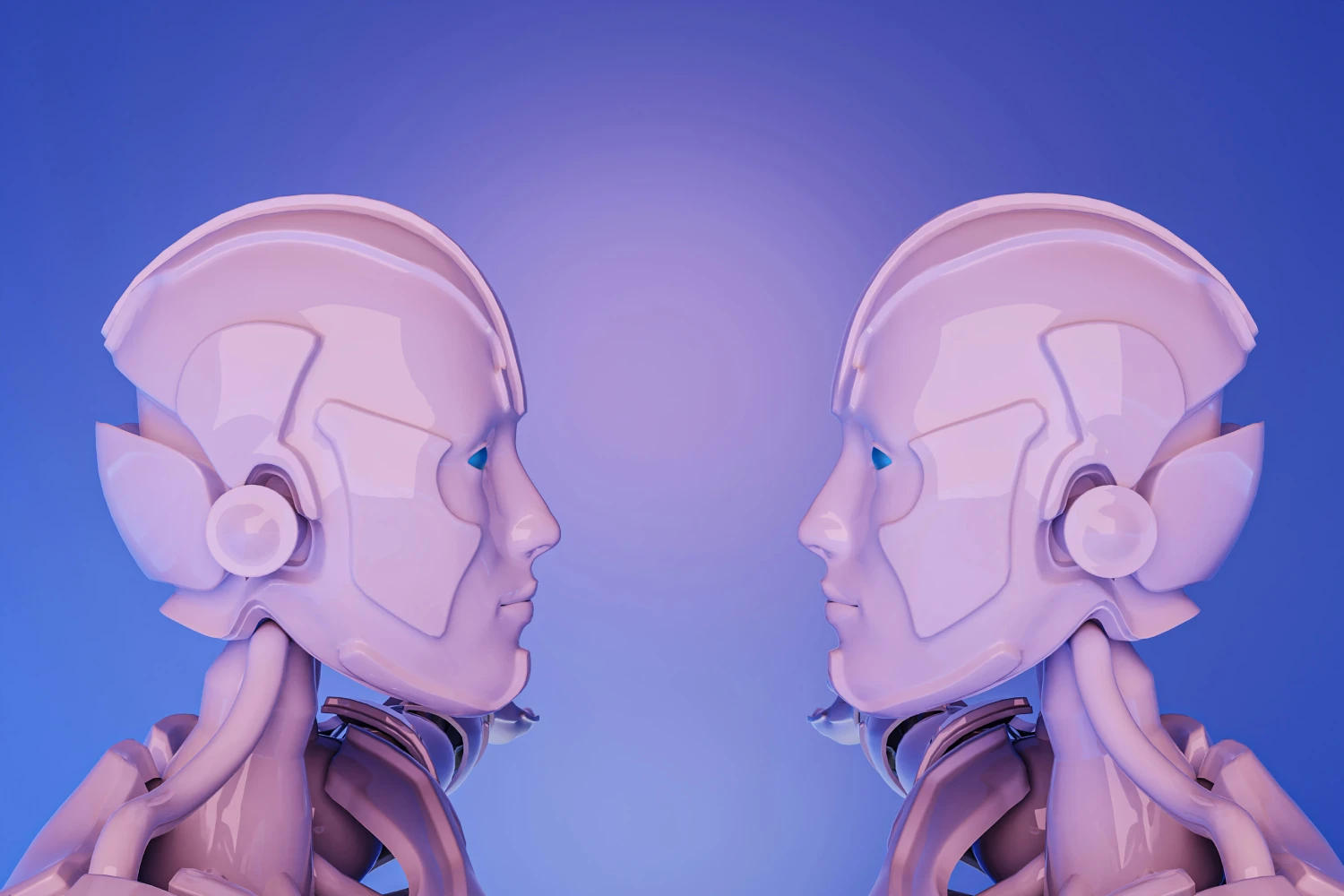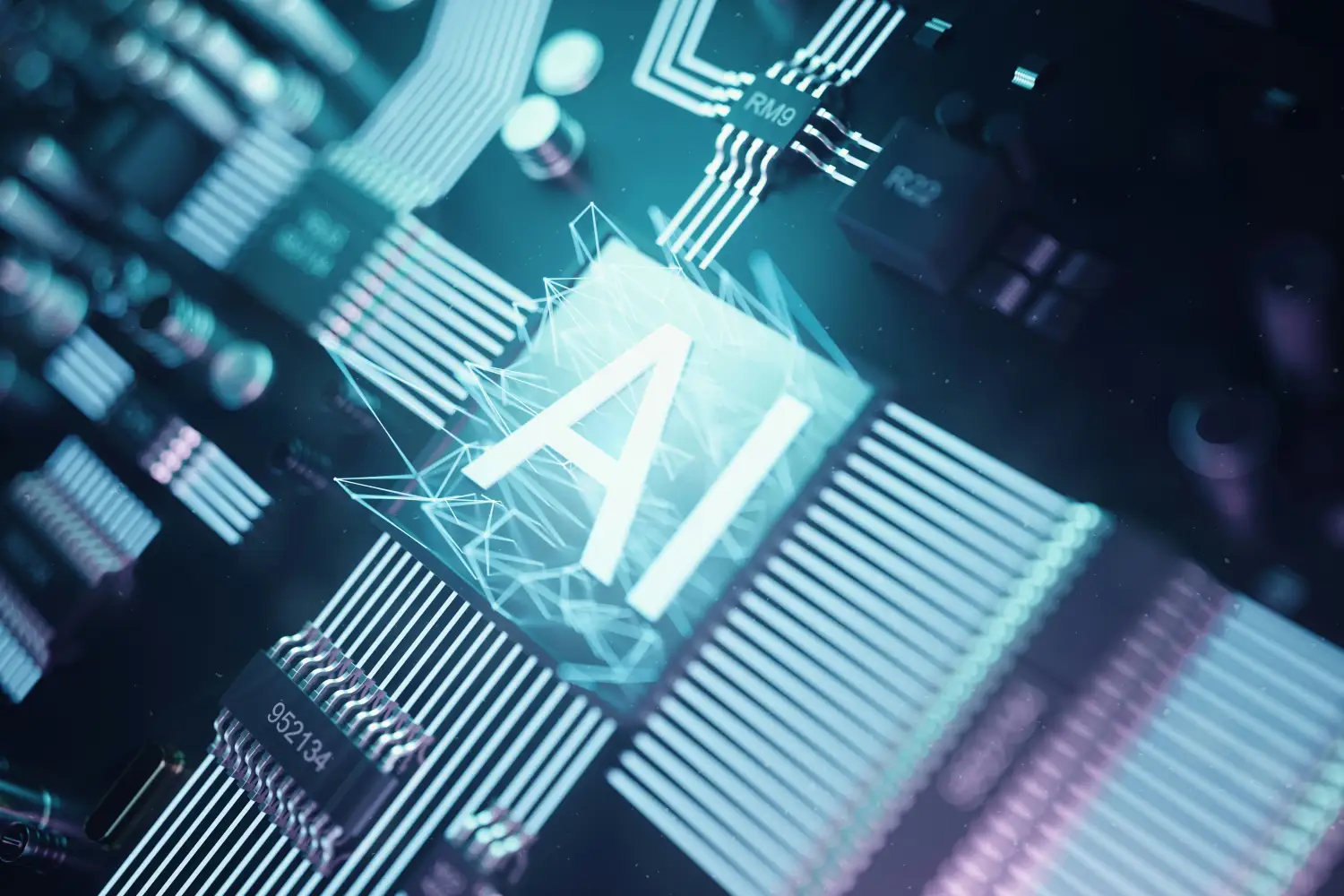AI agents are reshaping the way companies automate work. Unlike rule-based scripts that follow rigid instructions, AI agents can perceive data, reason, act, and adapt to changing goals. They mark a new stage in automation, where systems no longer just execute commands but make contextual decisions on behalf of teams.
For SMEs and startups, this means fewer manual tasks, faster decisions, and more structured operations. At Kleritt, we see AI agents as a way to bring clarity to work: helping businesses move from fragmented tools and repetitive tasks toward connected, intelligent systems.
What Are AI Agents?
An AI agent is a system that acts autonomously to achieve a goal. According to IBM’s explanation of AI agents, they are designed to perceive their environment, make decisions, and perform actions that lead toward desired outcomes. These systems differ from traditional automation in one key way: they don’t simply react; they reason.
In practical terms, this means an AI agent can monitor a CRM, analyze data from multiple tools, and decide whether to follow up with a lead, without human input. AWS describes this as the difference between “task automation” and “goal-oriented autonomy.” In other words, agents don’t just do what they’re told; they understand why they’re doing it.
How AI Agents Work
AI agents operate through a cycle of perception, reasoning, and action. They start by gathering information from systems or users, then analyze that data using logic or large language models, and finally take action, such as updating databases, sending messages, or triggering other automations.
In enterprise contexts, McKinsey refers to this model as “agentic AI”, interconnected digital workers that collaborate toward business goals. A single agent might analyze a dataset, while another interprets the results and communicates with users. Together, they form a network of coordinated assistants capable of running complex workflows.
At Kleritt, we design AI agents that integrate seamlessly into existing tools. We focus on three things: clarity, reliability, and control. Every agent we build has a defined scope, transparent logic, and an audit trail. This ensures companies maintain oversight while gaining measurable efficiency.
Types of AI Agents
AI agents can take many forms. Some are reactive, responding only to current conditions. Others are goal-based, working toward defined objectives through planning and adaptation. More advanced agents incorporate learning, improving over time by observing outcomes and adjusting their behavior.
In practice, you might see:
- A task agent that automatically qualifies leads or updates reports.
- A goal-based agent that monitors renewal deadlines across tools and ensures contracts stay current.
- A learning agent that analyzes customer support interactions and refines response logic.
- A multi-agent system where several agents collaborate, one managing data, another handling communication, and another generating summaries.
The diversity of these models shows why AI agents aren’t a one-size-fits-all concept. They’re flexible architectures that adapt to business complexity.
AI Agents vs. Traditional Automation
Traditional automation relies on predefined rules. It’s predictable but rigid, excellent for repetitive tasks, less effective when conditions vary. AI agents, by contrast, understand context. They make decisions based on goals rather than fixed triggers.
This difference has major implications for business operations. If you currently depend on a chain of simple automations that often fail when data changes, AI agents can manage those exceptions automatically. They reduce the need for manual oversight and let teams focus on higher-level work.
McKinsey highlights that agent-based architectures create longer-term value than incremental workflow automation because they introduce adaptability, a defining trait of sustainable digital transformation.
Real-World Applications
AI agents are already in use across industries. Companies employ them to:
- Qualify leads and prioritize outreach.
- Generate weekly reports from live data sources.
- Monitor supply chain operations and alert teams when anomalies occur.
- Manage communication across departments or clients.
McKinsey estimates the productivity potential of applied AI, including agentic systems, at up to $4.4 trillion globally. While enterprise-scale deployments are still developing, small and mid-sized businesses can already benefit from narrow-scope agents that eliminate manual coordination and data entry.
At Kleritt, we’ve seen companies recover hours each week by automating document follow-ups, supplier updates, and analytics reports, all through simple, secure agents integrated into their existing systems.
When to Use AI Agents as a Business
AI agents make sense when your processes involve high repetition, multiple systems, and recurring data handoffs. They’re ideal for businesses that already use automation tools but want to take the next step toward autonomy.
You might be ready for AI agents if you:
- Spend time reconciling data across tools.
- Handle similar client requests repeatedly.
- Depend on spreadsheets or manual reports for tracking performance.
- Want automation that can adapt, not just execute.
However, AI agents are not suitable for every situation. If your processes are still undocumented or your systems are entirely manual, start with basic automation first. The best results come when you build on an existing foundation of structured workflows.
At Kleritt, we use a simple test before implementing agents: does the process bring clarity, reduce friction, and improve control? If yes, an agent is worth exploring.
Benefits and Limitations
The advantages of AI agents are clear: less manual work, faster decisions, and better data flow. They create structure where operations are scattered and free up teams to focus on strategy.
However, limitations still exist. Agents depend on clean data and defined rules of engagement. They require governance, oversight to ensure outputs remain accurate and ethical. McKinsey notes that fewer than ten percent of companies have achieved full-scale agent deployment, largely because of gaps in data readiness and management structure.
Responsible implementation means balancing automation with transparency. That’s why Kleritt builds every agent with human override features and detailed process documentation.
How Kleritt Builds AI Agents
Our framework focuses on clarity, not complexity.
- Audit and discovery: we map your workflows and identify bottlenecks.
- Goal definition: we determine what success looks like, whether it’s hours saved or visibility gained.
- Design and build: we use platforms like n8n, Make, or custom APIs to create the right agent for your systems.
- Testing and iteration: we pilot the agent in real scenarios and fine-tune behavior.
- Scale and governance: we expand its role and set up monitoring for long-term reliability.
Our clients maintain ownership of every system we deploy. We believe automation should bring independence, not dependency.
The Future of AI Agents
The future of automation is agentic. Analysts expect businesses to move from static workflows to networks of intelligent agents coordinating across departments. McKinsey calls this the agentic AI mesh, a structure where interconnected agents support sales, logistics, finance, and customer service simultaneously.
For small and mid-sized companies, this evolution means two things:
- Tools like ChatGPT, Claude, and Gemini will increasingly serve as agent backbones.
- The skill will shift from “building automations” to “designing agents that think clearly.”
At Kleritt, we see AI agents as the next clarity layer in operations. They won’t replace teams, they’ll empower them by removing noise and repetition, letting people focus on growth, creativity, and client relationships.






